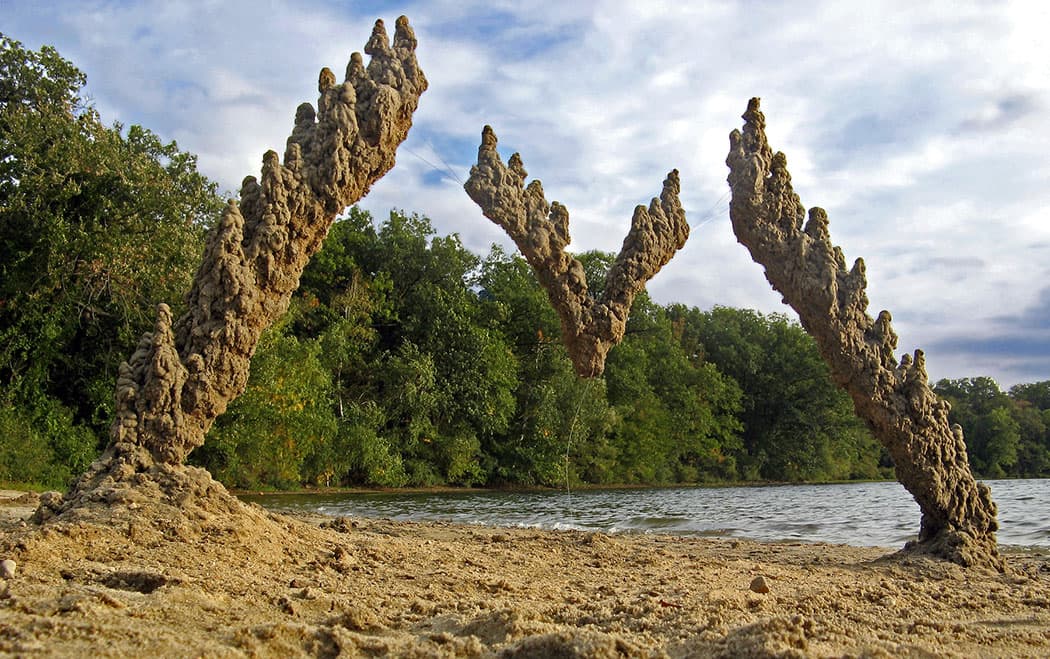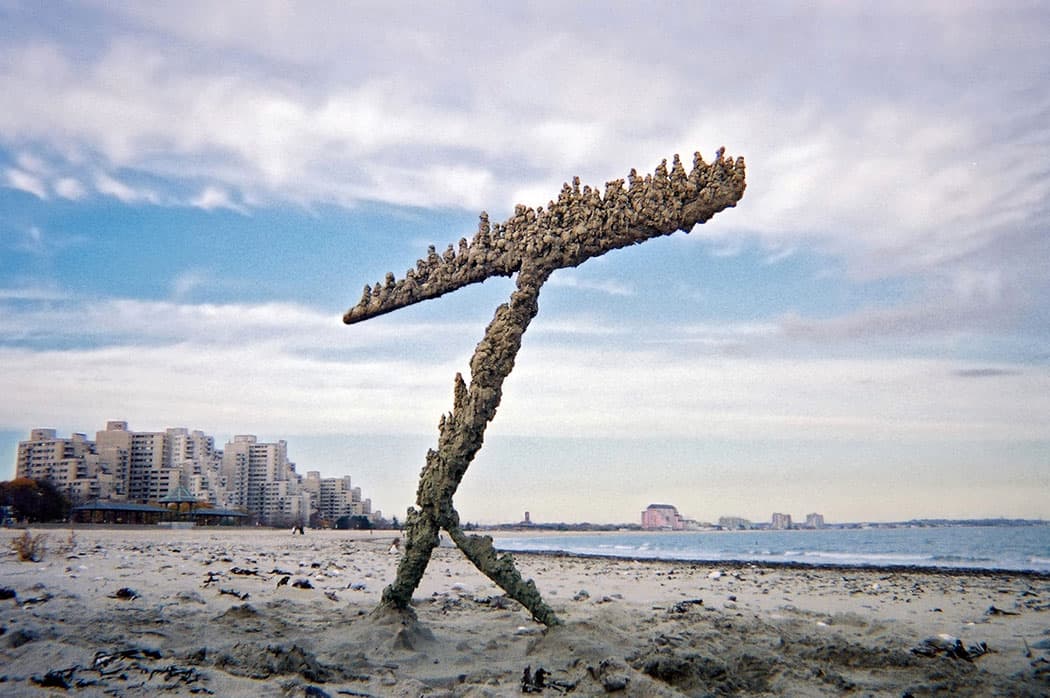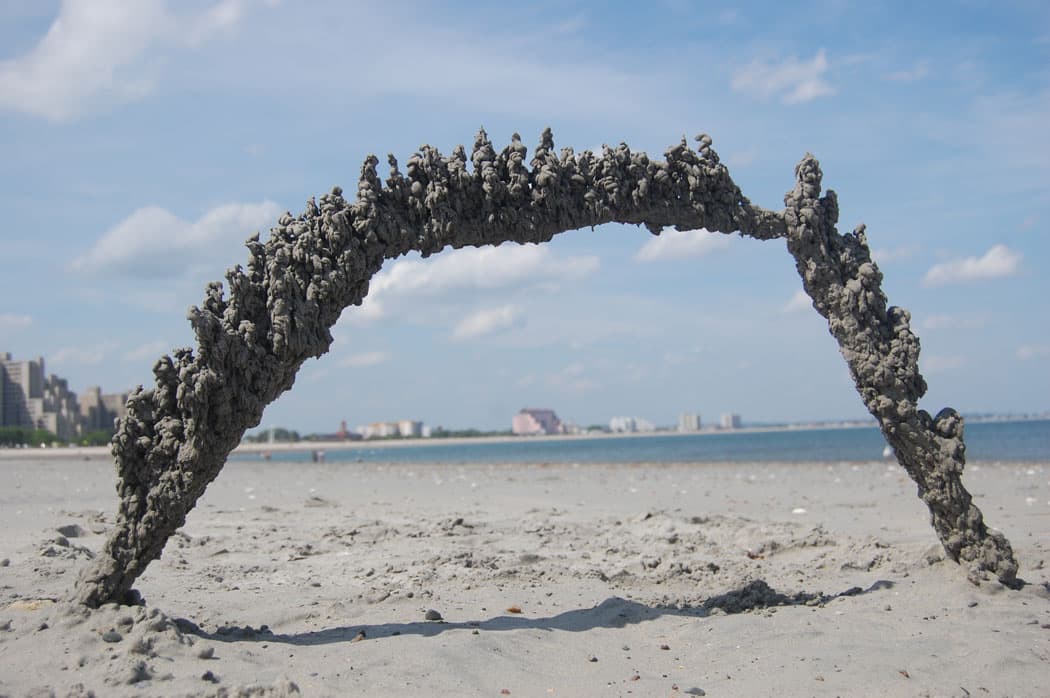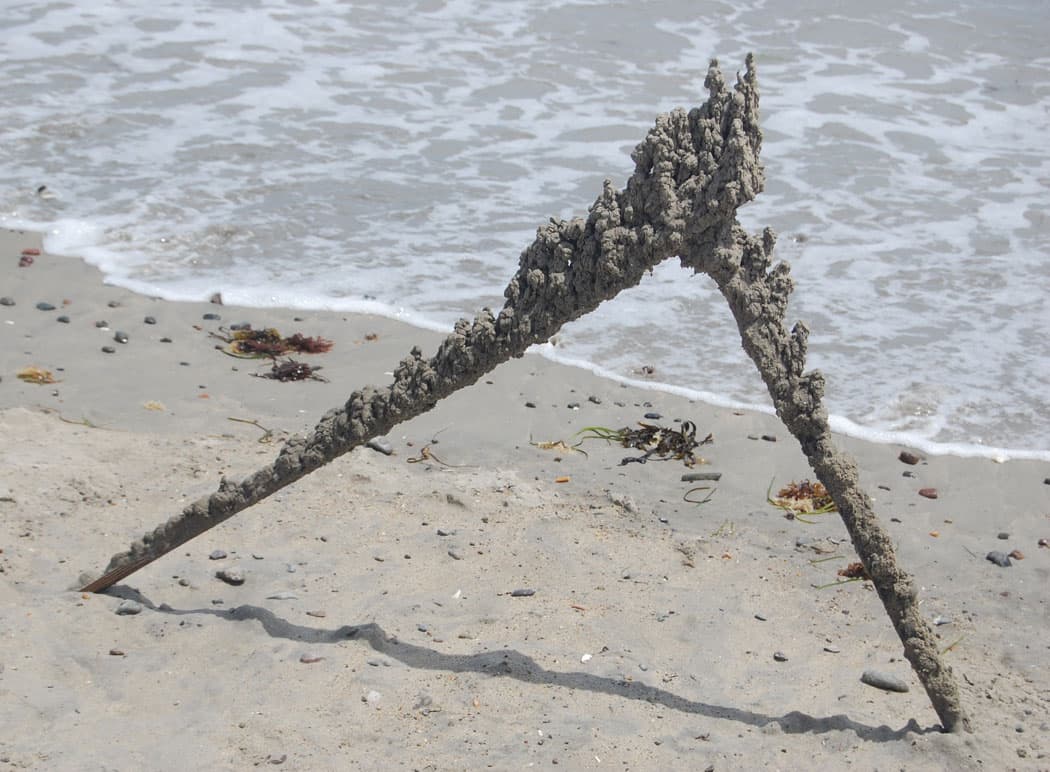Advertisement
How To Build Sandcastles The Sandcastle Matt Way
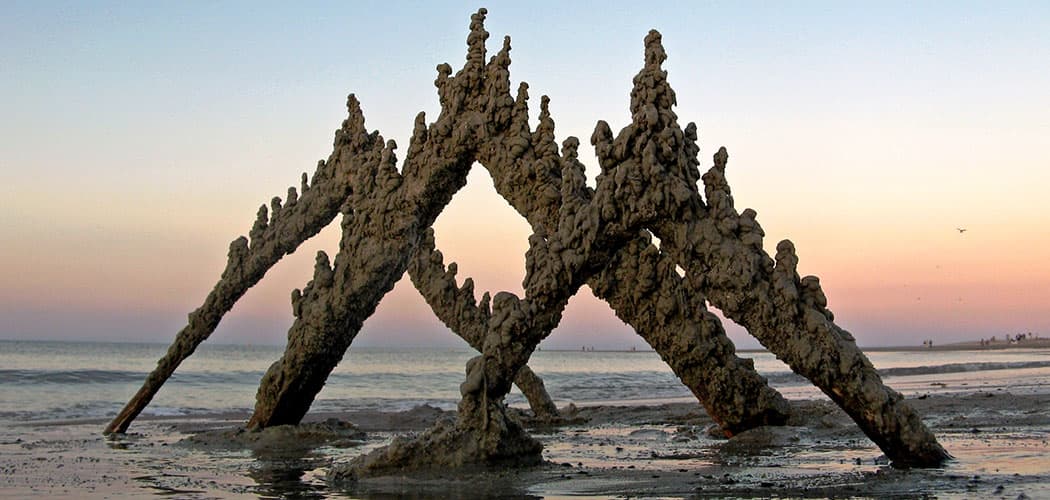
“Is your first name Sand?” asks the boy being introduced to the man building the sand sculpture on Revere Beach.
“I wish,” wistfully replies the man sometimes known as Sandcastle Matt and some other times known as Matthew Kaliner.
Kaliner, a Somerville resident, lectures on urban sociology at Harvard University and volunteers at Somerville Open Studios. Meanwhile, Sandcastle Matt is Internet famous for marvelous sandcastles that he builds by dripping sand onto elaborate architectures of sticks. They can bring to mind ancient temples or mythic gates or Dr. Seuss' Whovilles. You may have seen them on the DIY site Make or at the art and design website Colossal, which likened them to “contemporary land art pieces.”
“One time this lady came up to me,” Kaliner recalls, “and said, ‘I have a Ph.D. in physics and I don’t know how you did that.’”
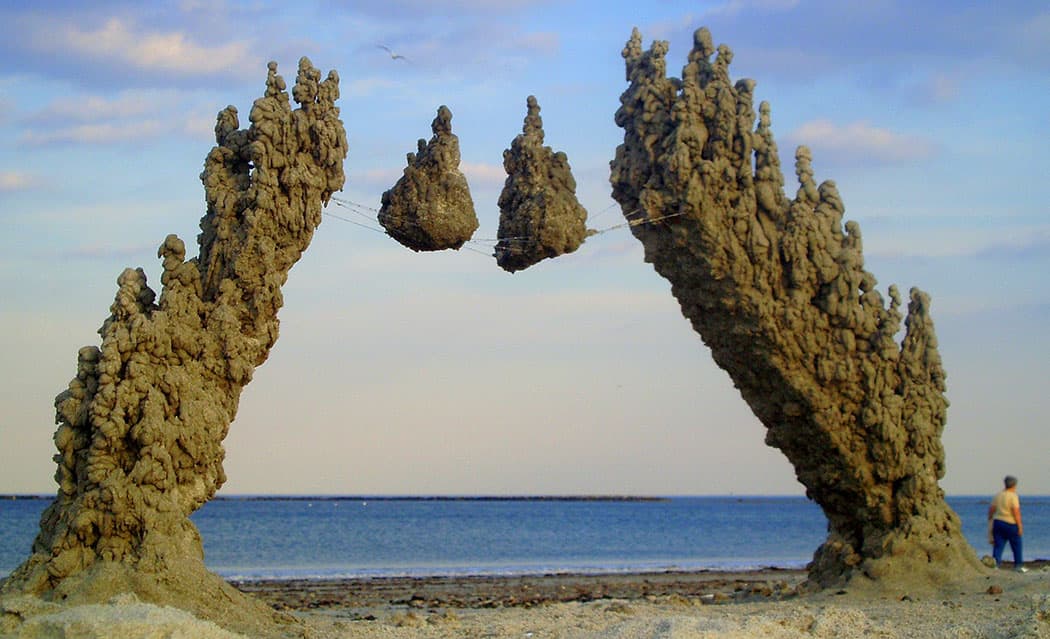
His sandcastles are so mysterious and intriguing that a couple years ago someone (erroneously) captioned one of his photos as “What happens when lightning strikes sand” and the thing went viral. Scientific American felt the need to debunk it: “The most likely scenario is that this isn't what happens when lightning strikes sand at all.”
In fact, as Kaliner explains below, they’re made from driftwood, a bit of string and dripped sand.
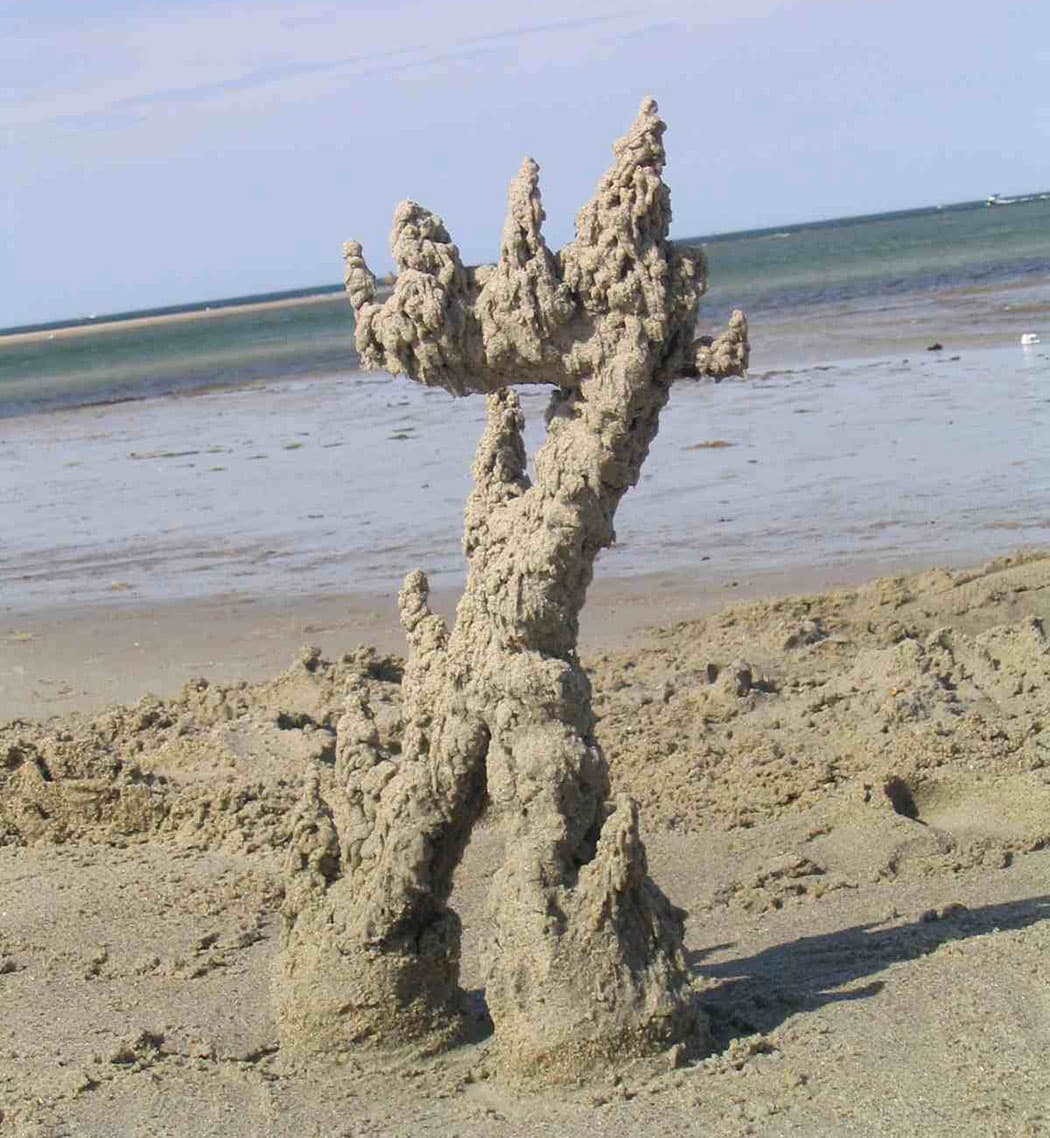
“I’ve always made sand castles,” Kaliner says. He grew up in Maryland and loves the beach. “Would it surprise you that I had a sandbox in my backyard when I was a kid? What I would do in the sandbox is I’d make volcanoes and I’d bury the hose inside it and turn it on and it explodes.”
Kaliner first started constructing his signature Sandcastle Matt castles a bit over a decade ago. “I was trying to make a sandcastle and I think I put a stick in it for structure and I thought: Why don’t I just start with a stick?”
Kaliner began posting photos of his creations to Flickr and was surprised by the substantial following they attracted. “I got some early stuff that got picked up by Reddit,” he says. “I mean 20,000 people can look at your photo in a day. That was the best thing. That made my month.”
During a recent trip to Revere Beach, he explains the secrets behind his magic:

1. “The principle is you use anything you find on the beach.”
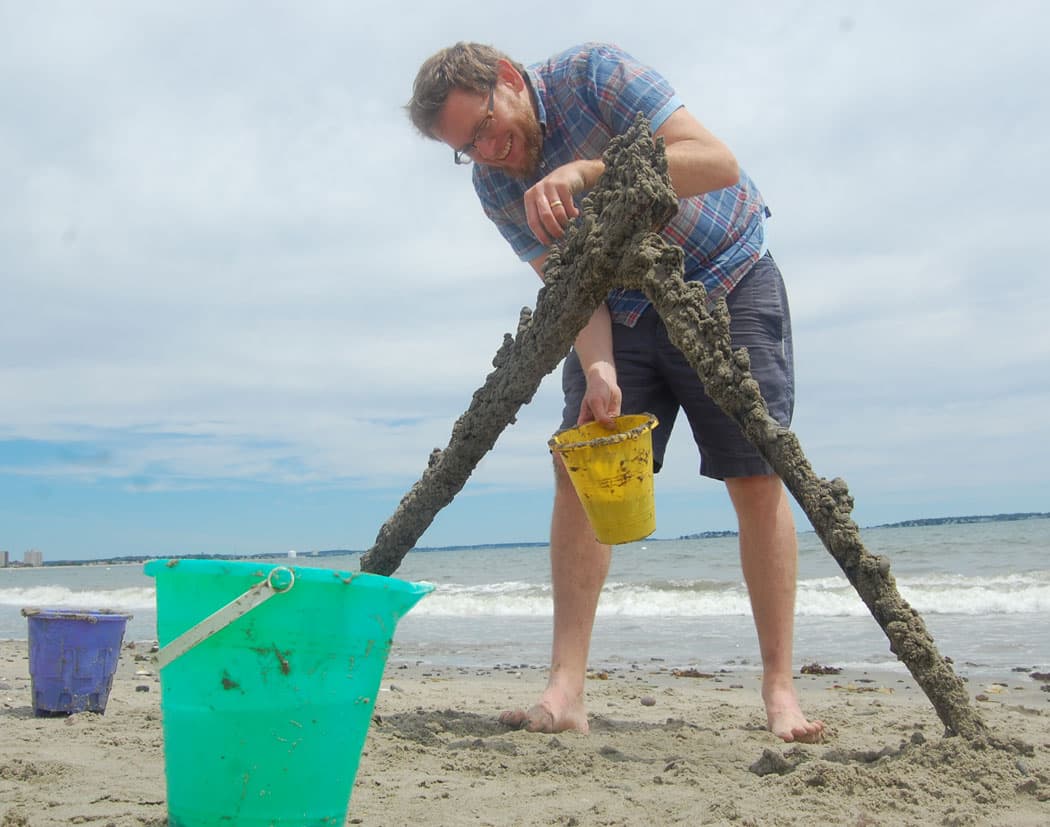
2. But bring a bucket and perhaps a shovel and string.
“The bucket is crucial,” he says.
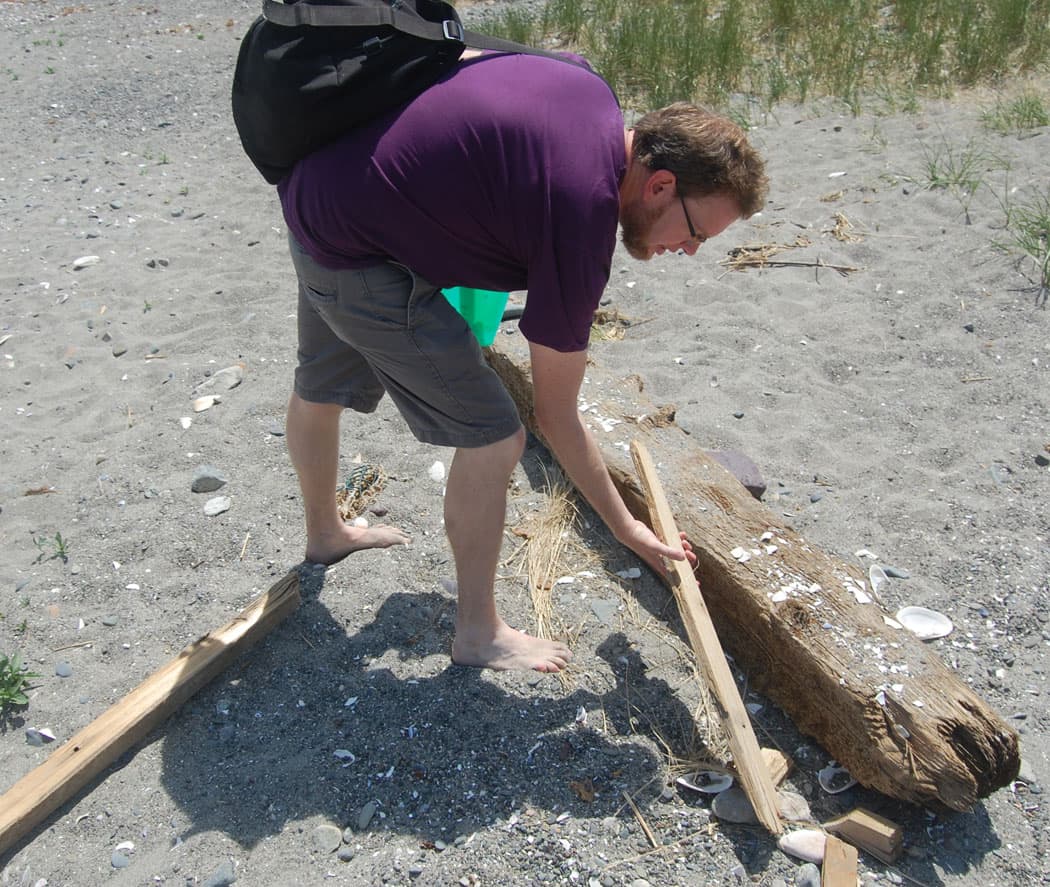
3. Find sticks to use as supports among the driftwood along the high tide line.
“I look for sticks that the sand will stick to,” Kaliner explains. “If it’s from a construction site and it’s treated wood that won’t work. Bark is no good. If there’s nails I don’t feel comfortable bringing it into a place where kids will be.”

“I go to Mexico or Puerto Rico once a year and I use palm fronds. And they’re the worst,” Kaliner says. “I’ve never made a good one in Mexico because there’s not sticks like this.”
“Revere Beach has the best sticks. Singing Beach [in Manchester-by-the-Sea], where they have kids who clean up the beach, that’s no good.”
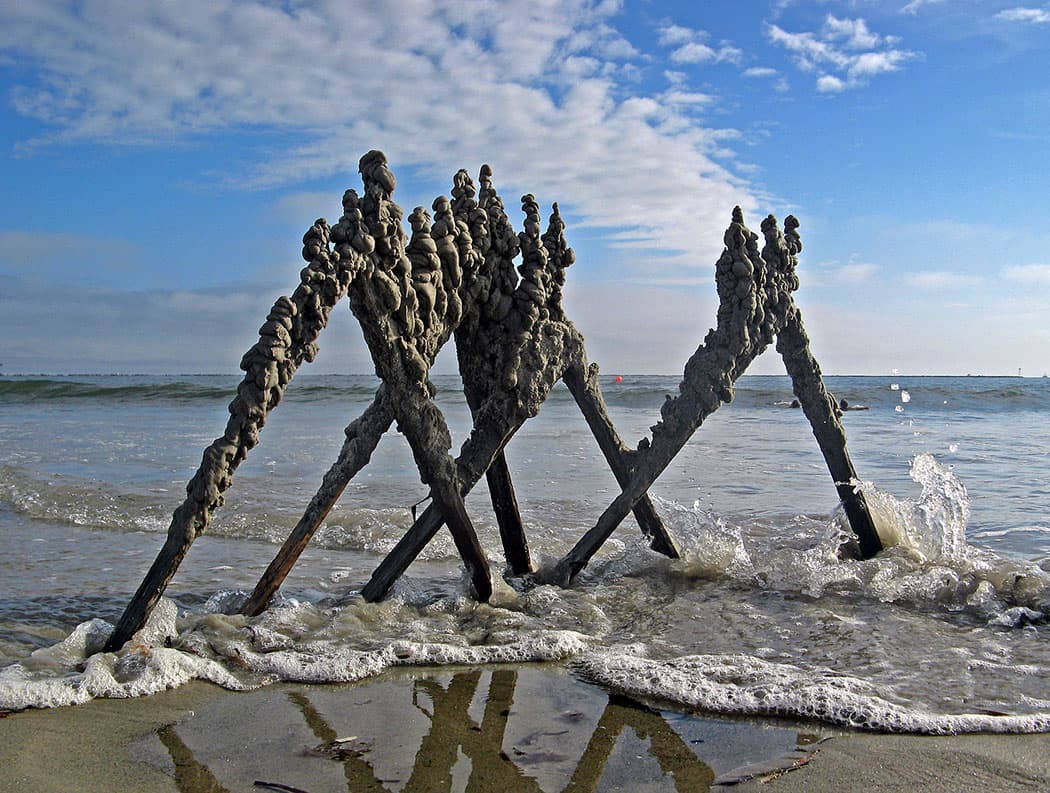
4. Pick a spot for building your sandcastle above the current water line, but that might later get flooded when the tide comes in.
It’s wicked cool when the sandcastles seem to have just sprouted from the water.
“This is going to be great,” Kaliner says. “The tide’s going to come up just when I’m done.”
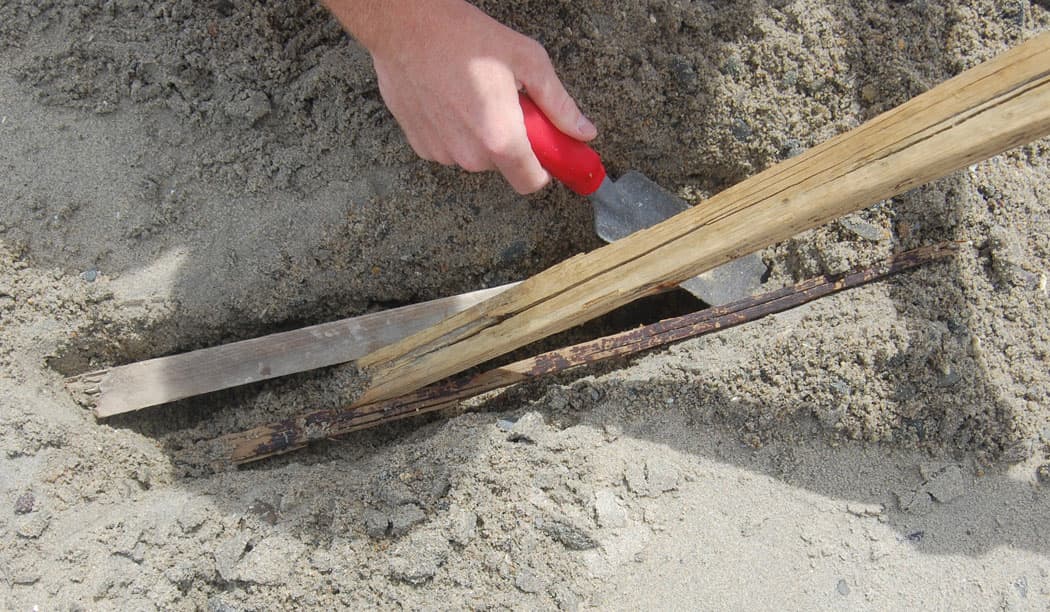
5. Anchor the sticks in the sand.
Support the main sticks by shimmying in smaller sticks or wedges at their base to keep them standing upright. Then strengthen and hide these supports by burying them with wet sand.
“There was that first one on Flickr that I was making at Crane Beach [in Ipswich]. I think it was a great moment,” Kaliner says. “What I discovered is if you make it this way it won’t fall over [when it’s flooded by the tide]. It’s going to stand up.”
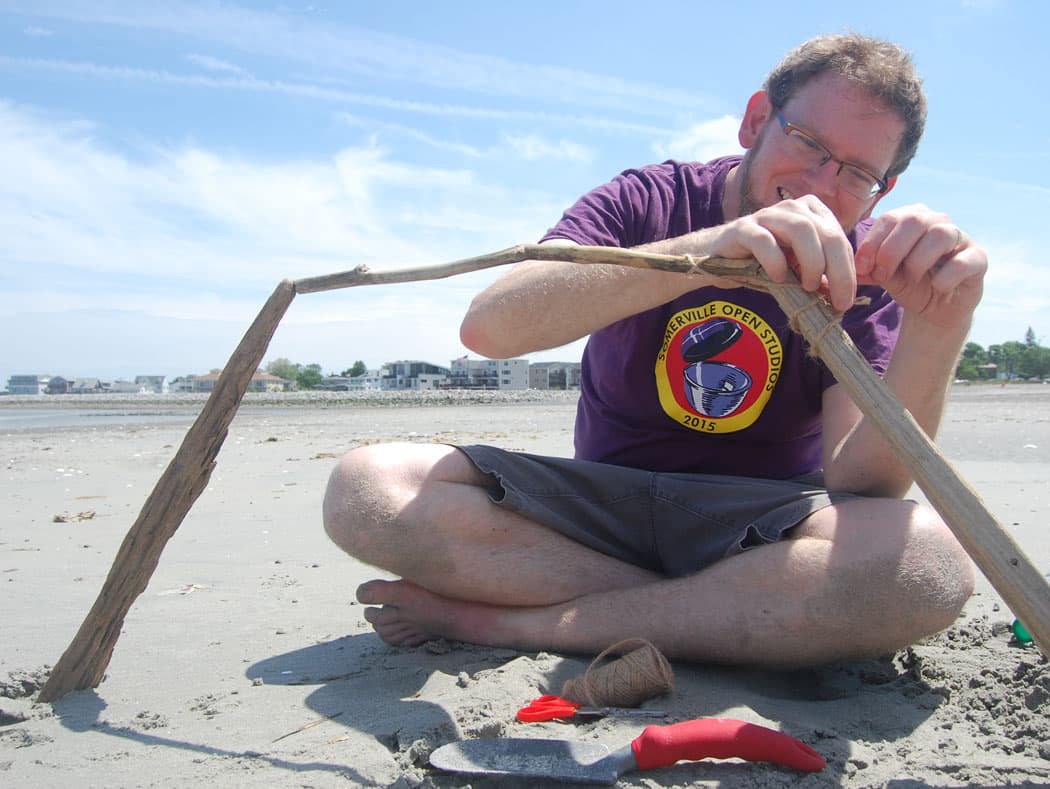
6. Lash the sticks together with string to form supports for your castle.
“The string is essential. I’m going to put, I don’t know, 20 pounds of wet sand on this thing. Without string it’s going to crumble,” Kaliner says. “Sometimes I take a piece of string and wrap it around, corkscrew it around it, to give it some traction.”
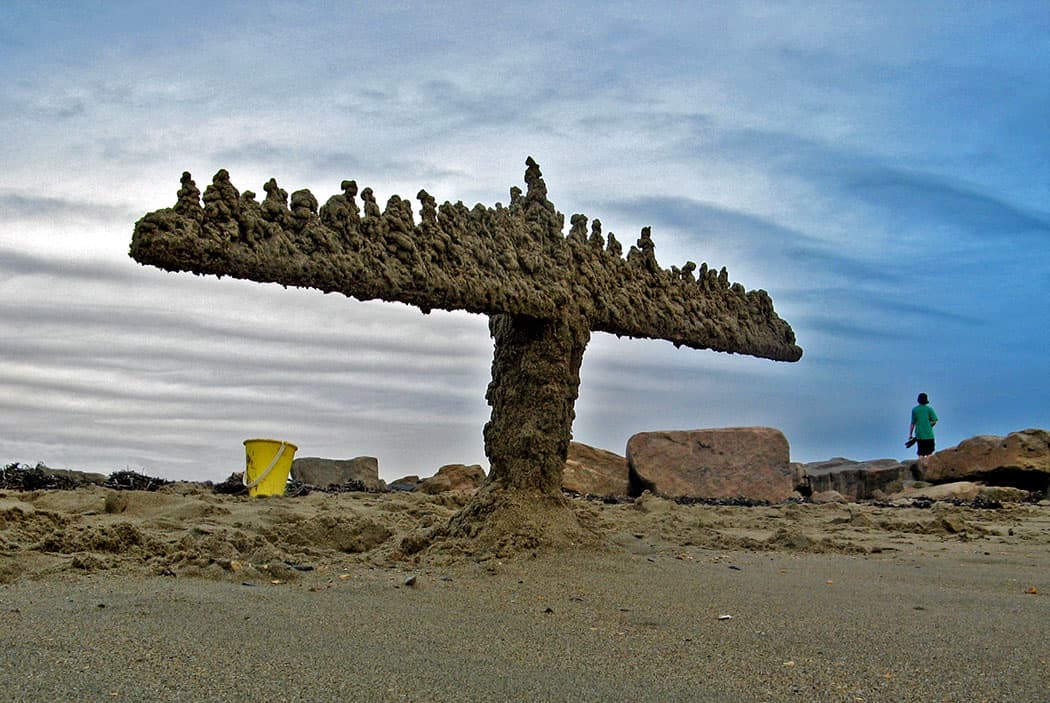
7. Collect sand in your bucket.
“Go up the beach and find the smoothest sand you can,” Kaliner says. The pebbly sand at some beaches—like at Orient Heights in East Boston or in Marblehead—is often too crumbly for building his sandcastles. Revere Beach sand gets his thumbs up for building, but “the gray sand is not very attractive.”
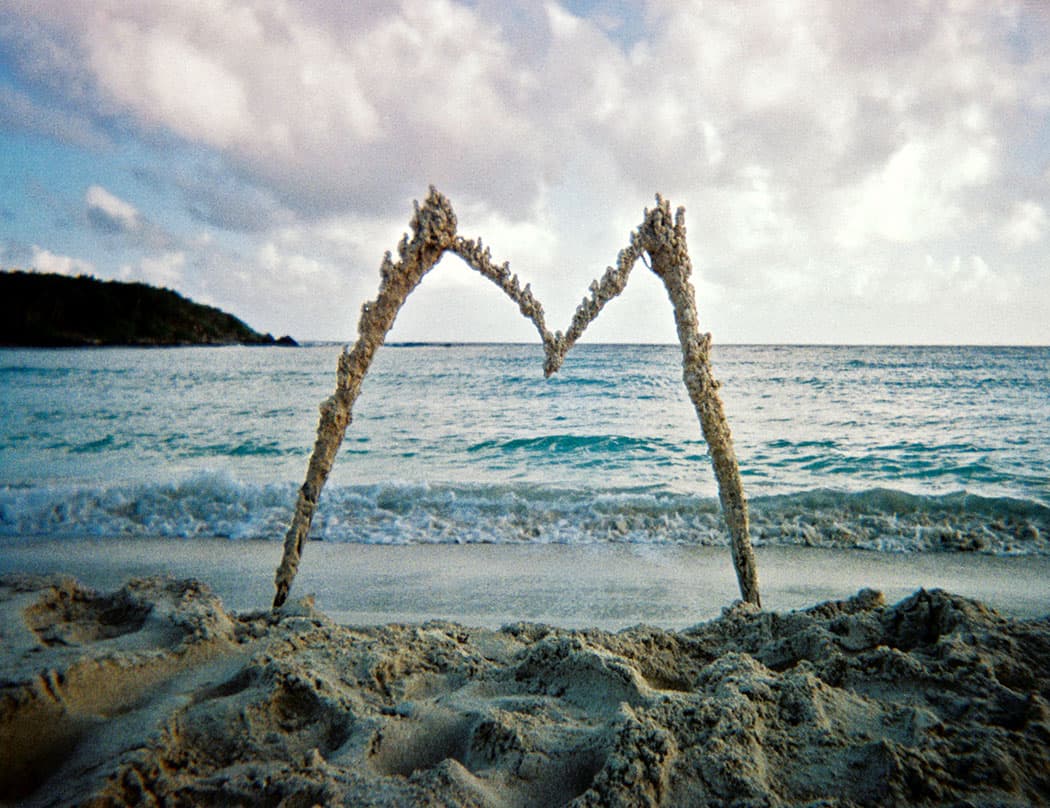
8. Mix the sand in the bucket with water.
It should be about three-quarters water to one-quarter sand.
“If it’s too wet, it’s going to be a mess. This first step, I like to have layers of wet and dry because there’s certain things wet and dry can do,” Kaliner explains. Suddenly some of the sand collapses from the sticks. “It got too wet over here and it fell off.”
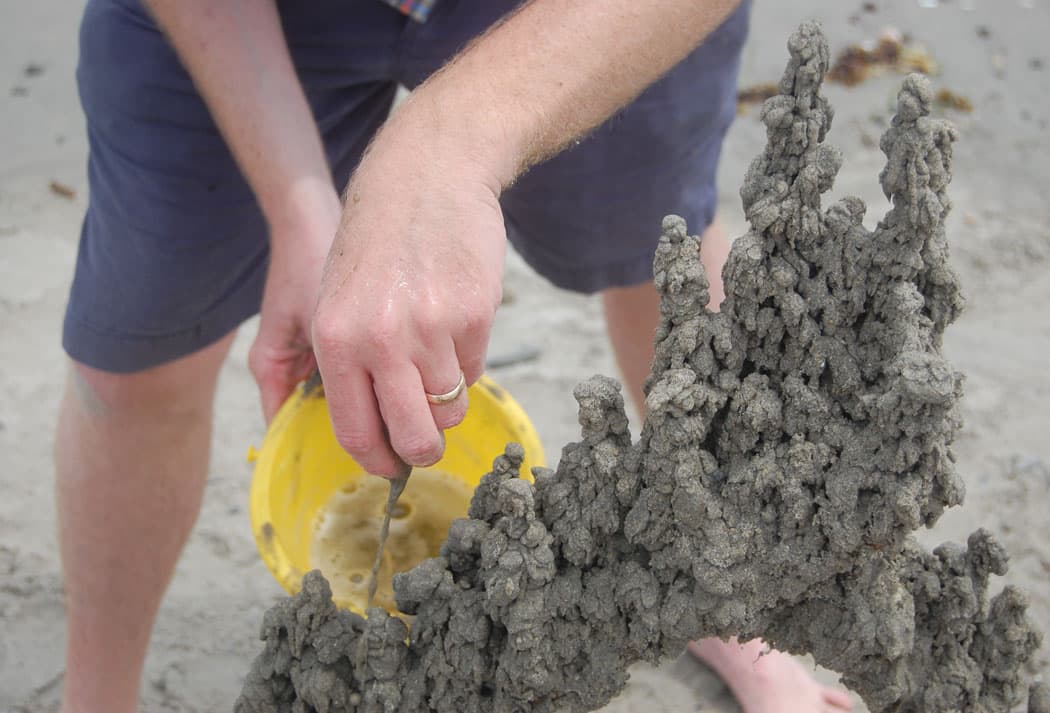
9. Drip the wet sand off your fingers onto the support sticks.
“It feels good. The way it runs through your hand is fun. I like the idiosyncrasy of it,” Kaliner says. “There’s something very Gaudi about them. I went to Barcelona when I was 20 and I loved Gaudi.”
“No matter how hard I tried, I couldn’t improve on that,” he says admiringly of his dripped formations. “There’s no better way of making sand castles. And then the idea that you can do it in a way that frames the beach is awesome.”
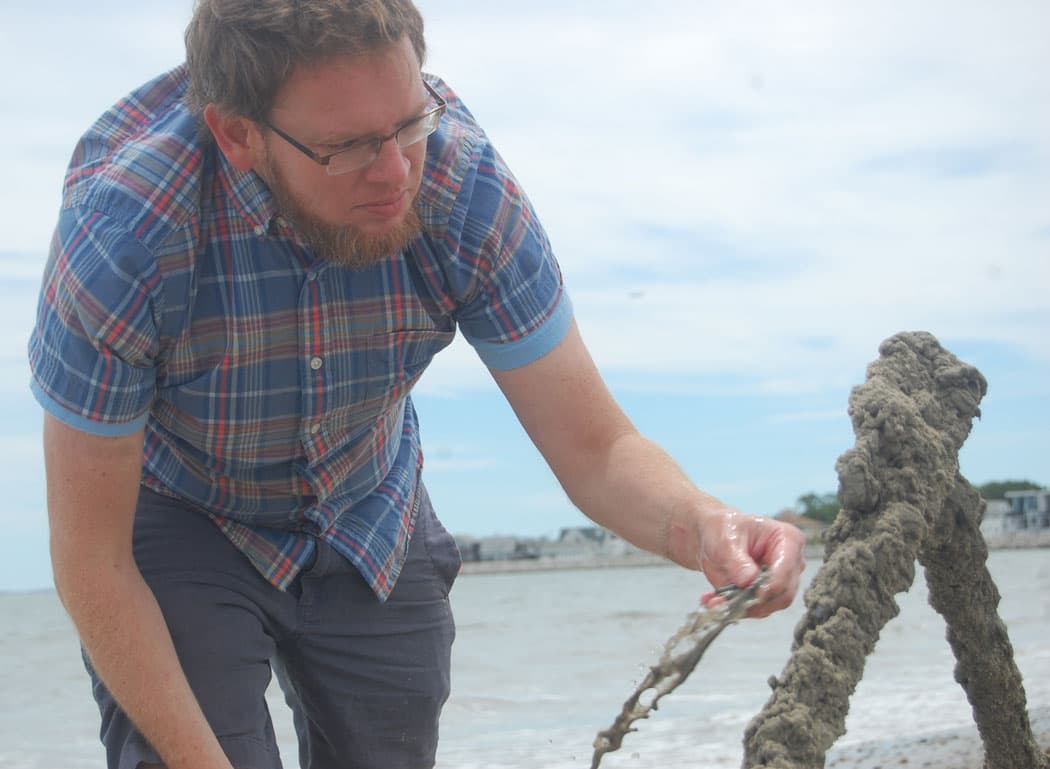
10. Flick your wrist to fling the sand onto the undersides of the sticks.
“The hardest thing is to get it underneath,” Kaliner says. “I discovered one day if you just throw it up in the air when it’s wet, it’ll stick. Then you can immediately add dry sand.”
“Sometimes I get the sense that the thing is so wet that it’s going to collapse,” Kaliner says. “Think about it: We’ve gone through three to four buckets of water and it’s all trapped in the sand. I think we’ve got to call it quits. I’ve got this sense that it’s all going to go.”

11. When you’re finished dripping sand, wash away the messy drips underneath your span.
“There’s one last trick,” Kaliner confides. “I like to make it wet because that way all the little drops and stuff become invisible.” It hides the construction work and makes it look as if the sand sculpture just magically appeared.
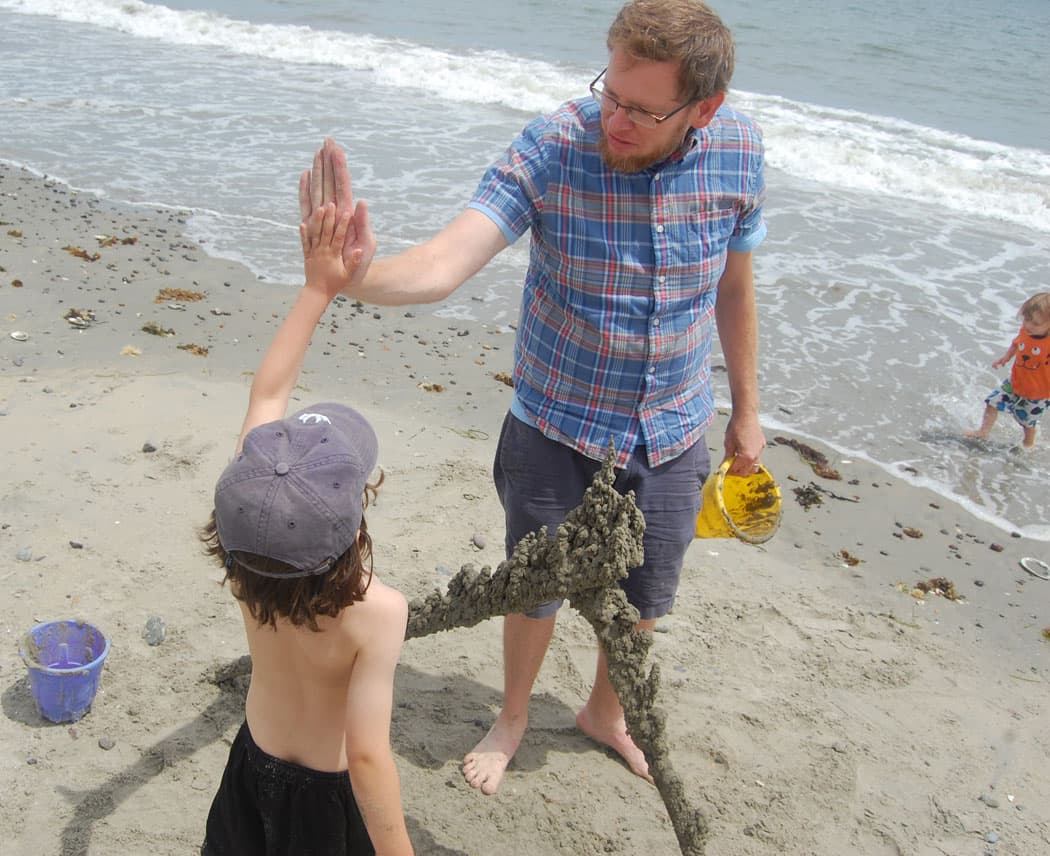
12. Congratulations, you’re done.
“I know I’m done,” Kaliner says, “when strangers come up to me and say, ‘How did you do that?’”
Greg Cook covers the waterfront for WBUR's ARTery. Follow him on Twitter @AestheticResear or on the Facebook.
